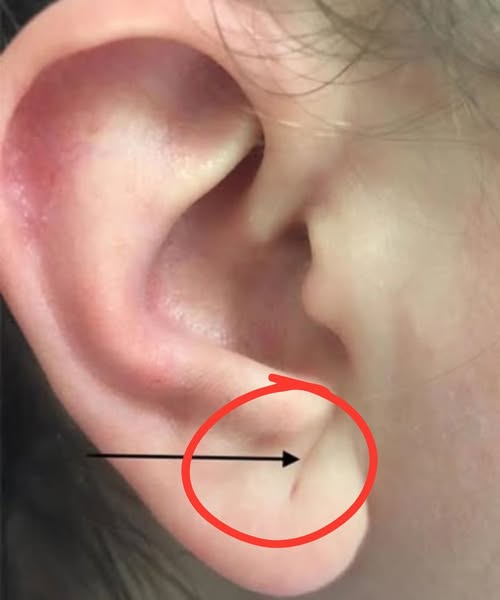What Is Frank’s Sign ….and Could It Be a Clue to Heart Disease
Ever noticed a diagonal crease on someone’s earlobe—and wondered what it means? It turns out, this small feature might be more than just a quirk of aging. It’s called Frank’s Sign, and some researchers believe it could be a subtle hint about your cardiovascular health.
Let’s explore what Frank’s Sign is, what it could be telling you, and why it’s got cardiologists paying attention.
Frank’s Sign refers to a diagonal crease that runs across the earlobe at about a 45° angle. Medically, it’s known as the diagonal earlobe crease (DELC).
This crease was first described by Dr. Sanders T. Frank, who noticed it in 20 patients with angina—a condition caused by reduced blood flow to the heart. Since then, it’s been linked not just to coronary artery disease (CAD) but also to other conditions related to poor blood circulation, such as peripheral vascular disease and cerebrovascular disease.
In simple terms: A crease on your earlobe might be an external sign of internal vascular issues, especially involving the arteries.
Frank’s Sign is often seen in patients visiting cardiology clinics, particularly those who’ve had coronary artery bypass surgery or have known heart conditions.
However, it also shows up in otherwise healthy people—and in those cases, it may still be a red flag for increased cardiovascular risk, especially in individuals under the age of 60.
- Appears in both thin and overweight individuals
- Not directly linked to body weight or BMI
- May reflect underlying vascular changes regardless of outward health
Researchers are still piecing together exactly why this crease develops. Here are a few leading theories:
The middle part of the earlobe is supplied by tiny, terminal arteries. If these vessels experience poor circulation (similar to what happens in heart disease), the tissue may change—leading to the formation of the crease.
Some studies, including those in Japanese patients with metabolic syndrome, have found a link between DELC and shortened telomeres—which are markers of cellular aging. This suggests the crease might be connected to the broader process of vascular aging and atherosclerosis.
Not all earlobe creases are created equal. Some researchers have proposed severity levels based on how the crease appears:
| Type of Crease | Possible Significance |
|---|---|
| Incomplete crease on one side | Least concerning |
| Complete crease on one earlobe | Moderate risk indicator |
| Creases on both earlobes | Potentially higher cardiovascular risk |
The deeper, longer, and more symmetrical the creases are, the more they may correlate with underlying vascular issues.
Frank’s Sign is not a diagnosis—but it can be a useful early warning sign. Think of it as nature’s nudge to pay closer attention to your heart health, especially if you’re under 60 and otherwise asymptomatic.
If you or someone you know has noticeable earlobe creases—especially bilateral ones—it’s a smart idea to schedule a heart health check-up with a healthcare provider. A few simple tests (like cholesterol panels or an ECG) could offer peace of mind—or catch something important early.
- Frank’s Sign is a potential marker of cardiovascular disease.
- It’s not proof of heart problems but may warrant further screening.
- Early detection saves lives—so don’t ignore what your body (or ears!) might be telling you.
Disclaimer: This article is for educational purposes only and is not a substitute for professional medical advice. Always consult with your doctor regarding any health concerns or symptoms.
You’ve just read, What Is Frank’s Sign. Why not read Manager Had To Hire A New Employee.




